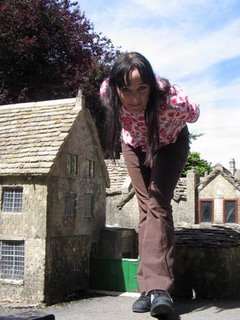Forum - Week 6 - Vicki Bennett and the Art of Sound Collage

I found Vicki's work quite engaging. Mash-ups are a little old hat nowadays, but her development of the genre shows how no horse should be left unflogged. Despite the length of the piece played, the class remained fixated on the musical progression, listening for a recognisable song, melody of voice. In particular I spotted Marylin Manson's voice, which was somewhat difficult to discern considering it was just a raw recording of his voice with no effects, unlike the majority of his recordings.
It was also good to have David Harris back in the mix (so to speak), and I hope we get some more subjugation to Harrisian values throughout the year.
Forum, Week 6, “Vicki Bennett and the Art of Sound Collage.” Workshop presented at EMU Space, Level 5 Schultz building, University of Adelaide, 10th of April 2008.







